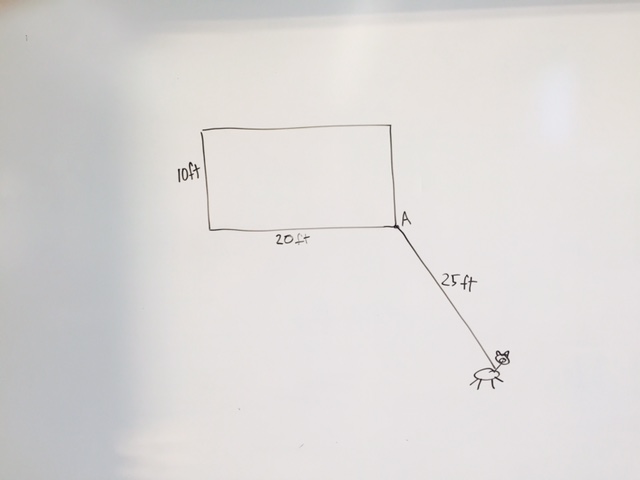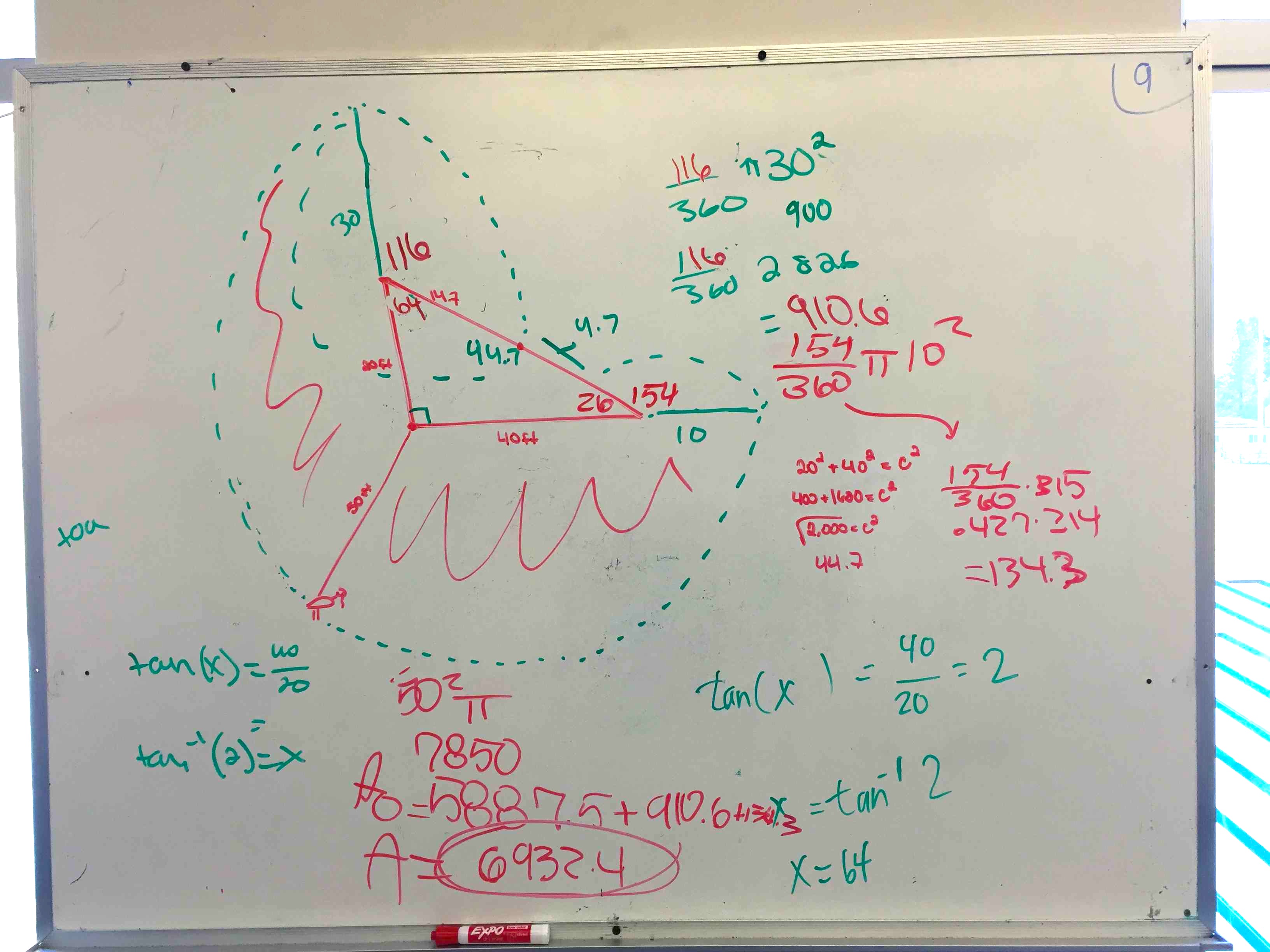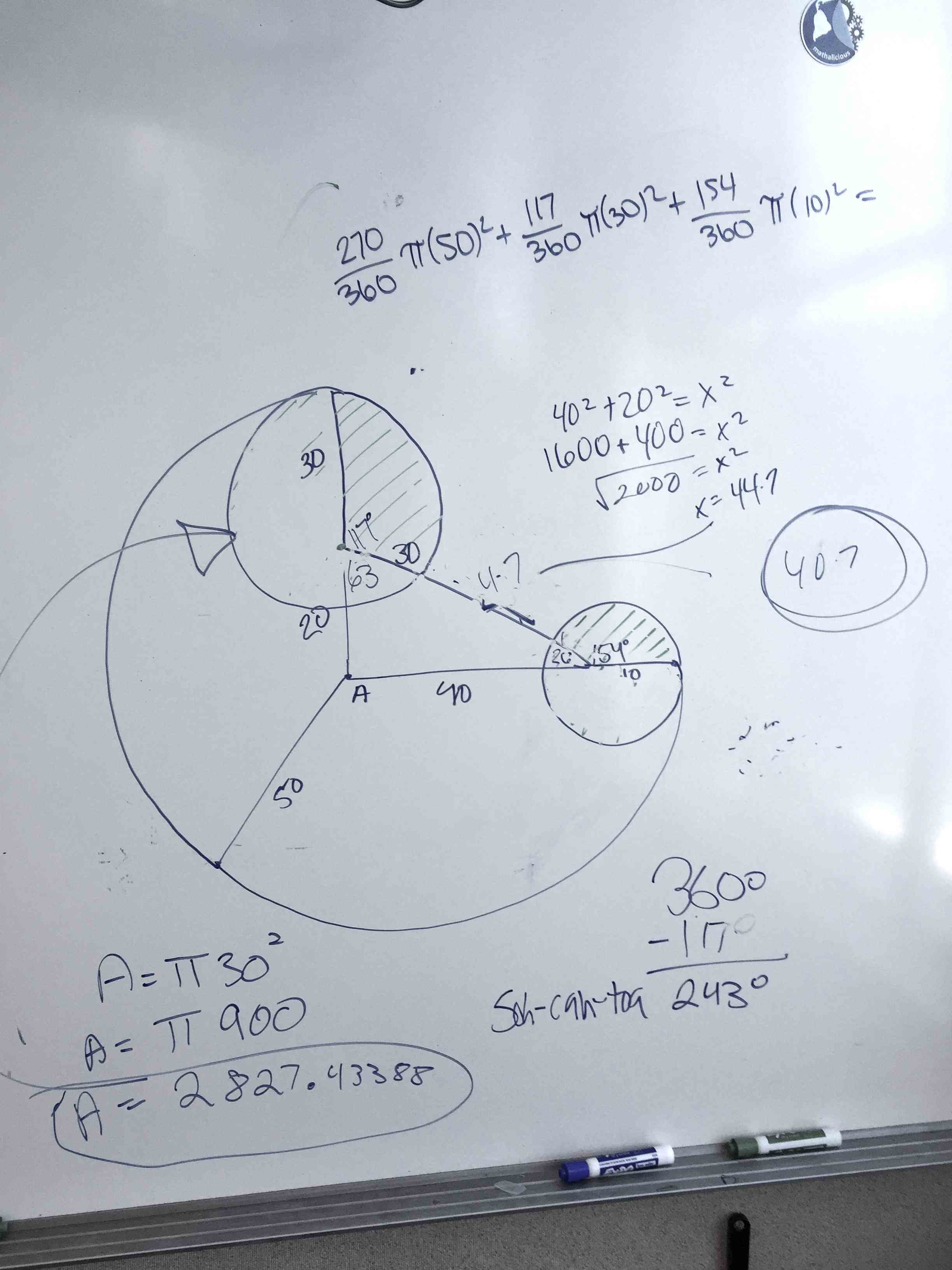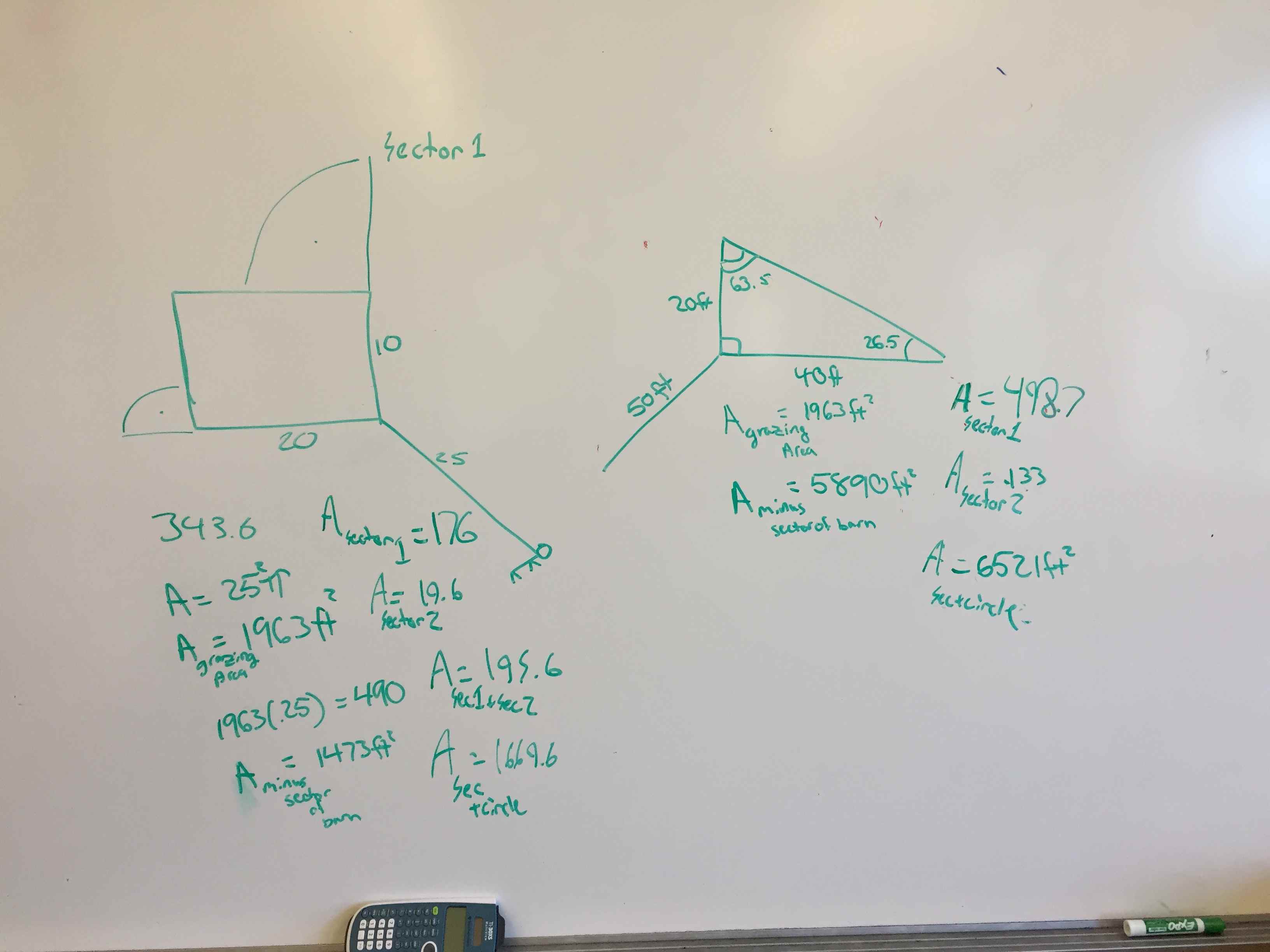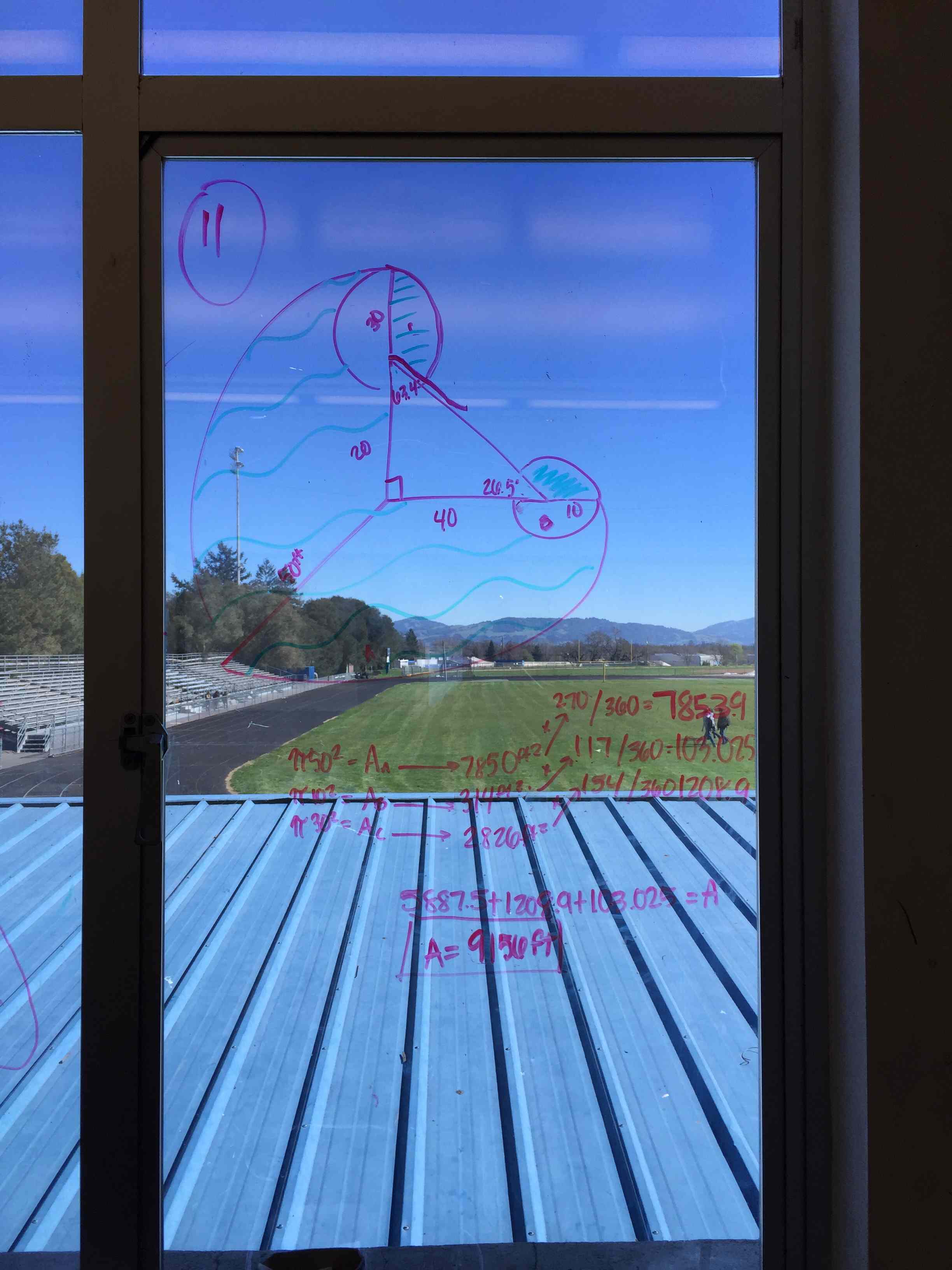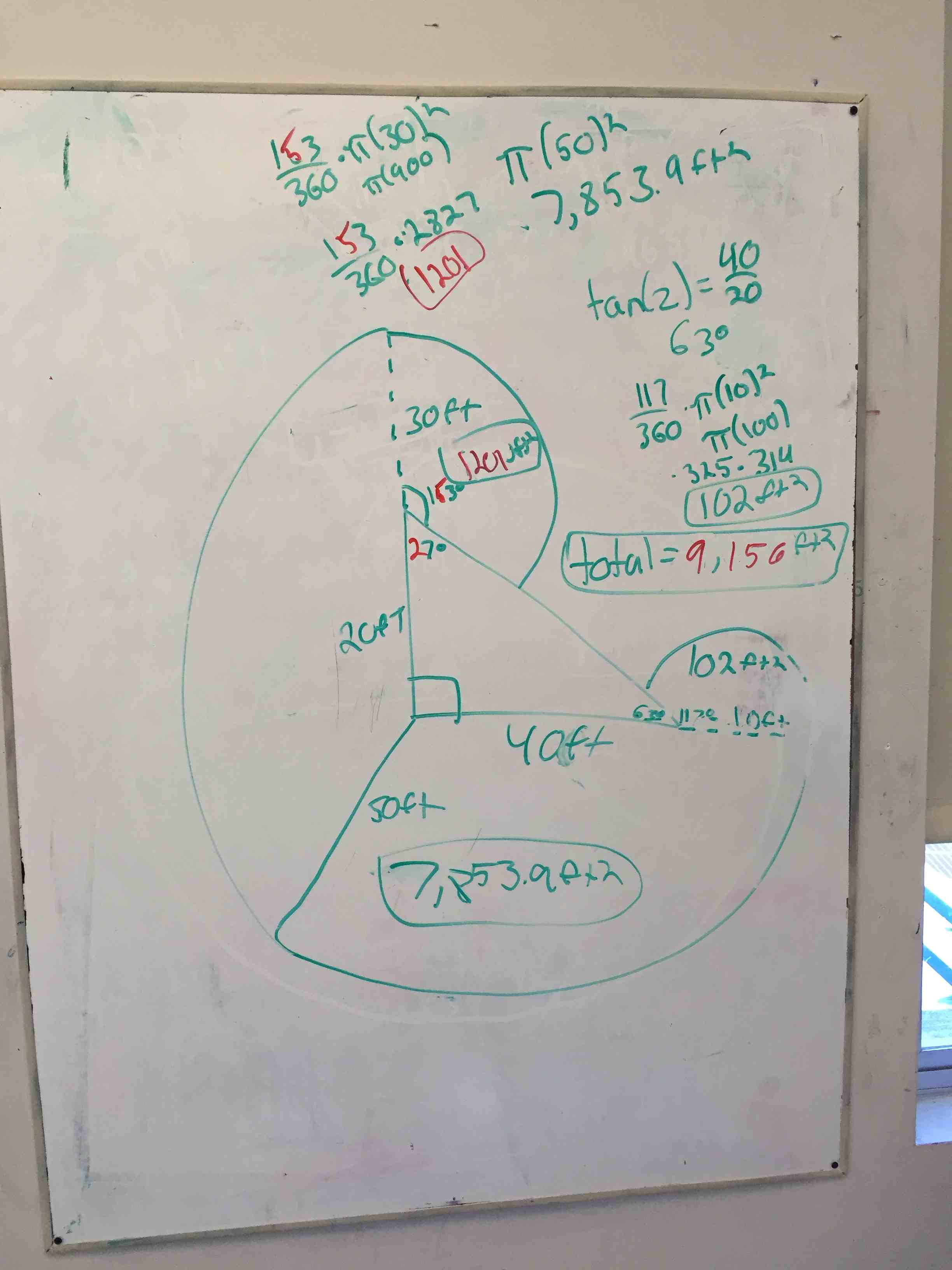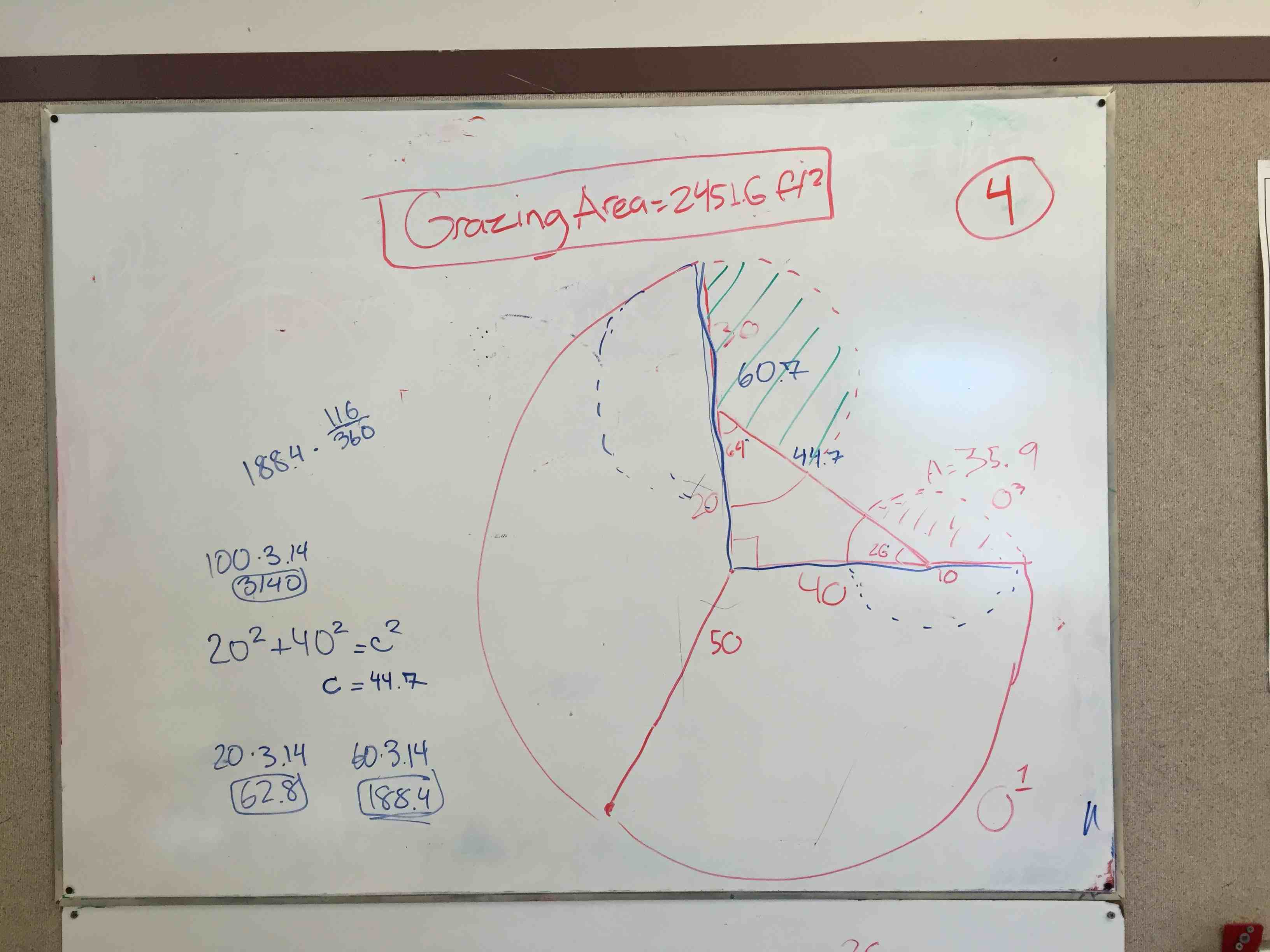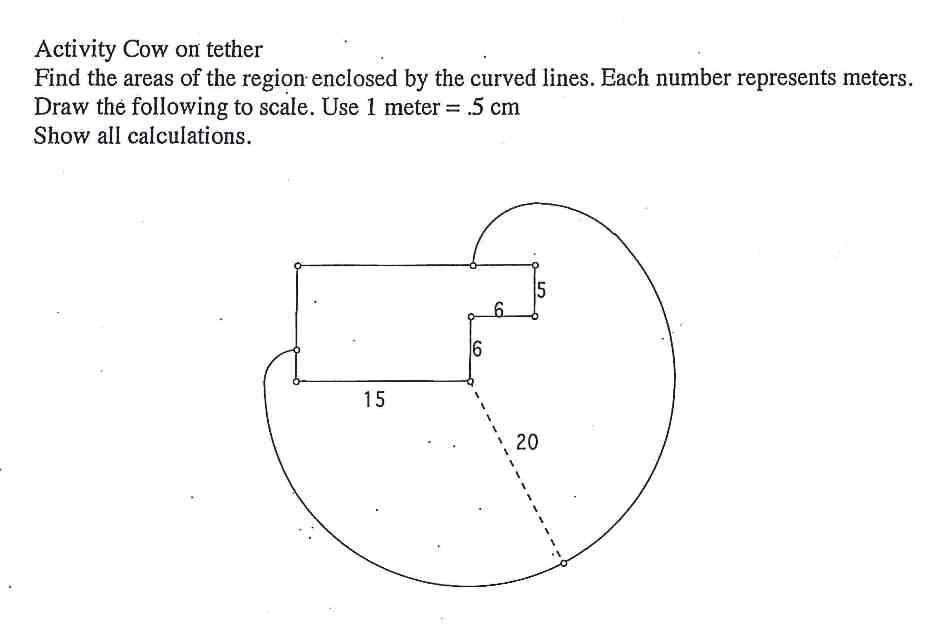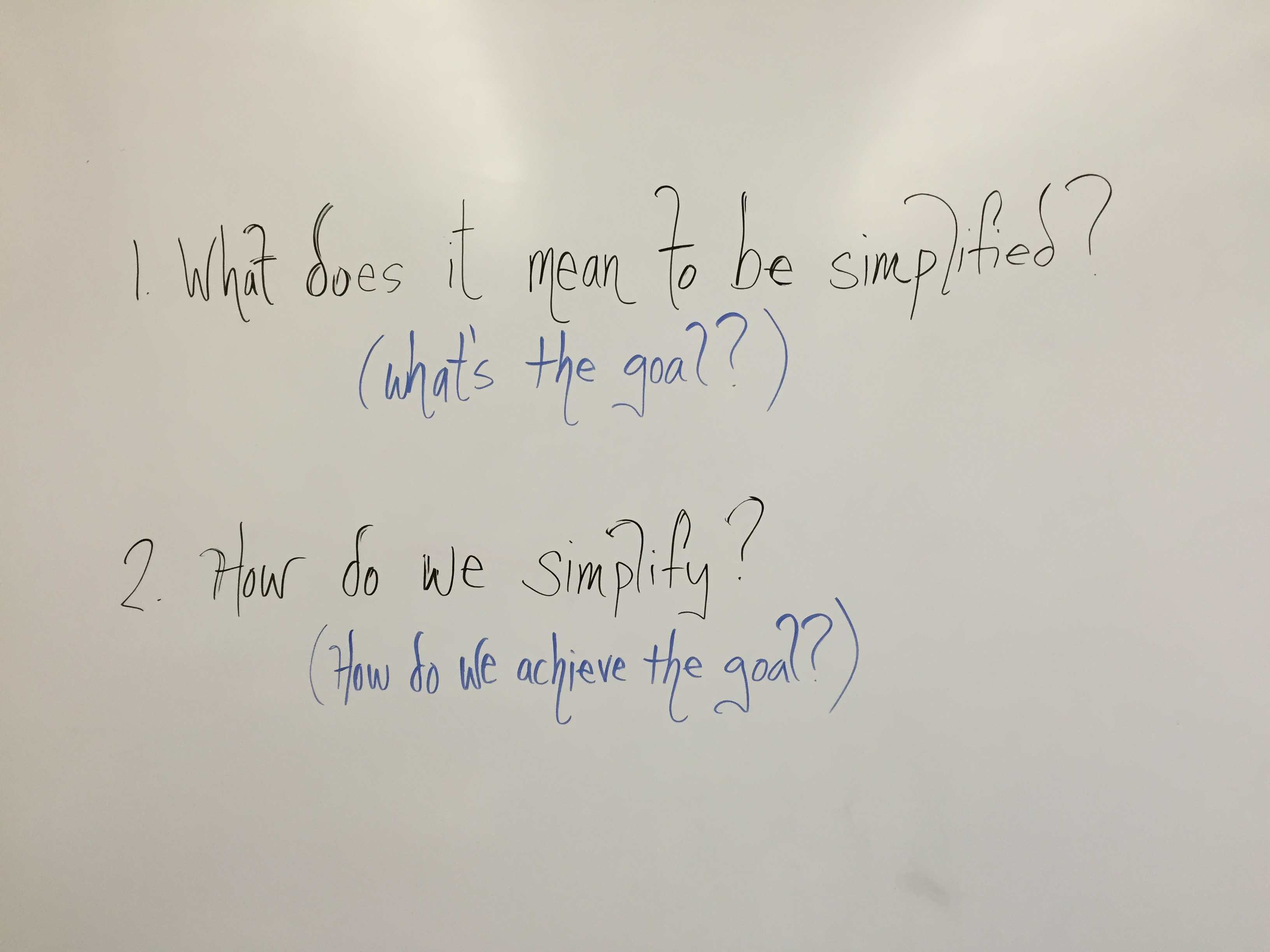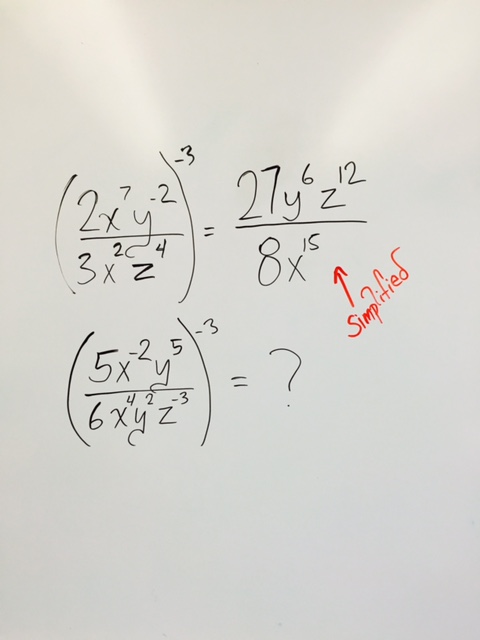I used to give this worksheet but now I draw the picture on the whiteboard and give the question orally. Then I provide them a couple of minutes of silent time to work alone in their notebooks. From there I group them and they work the problem at vertical erasable surfaces. Here’s the basic question:
A goat is tethered to a 25 foot rope attached to a rectangular barn at point A. What is the total grazing area available for the goat?
I leave them room to experiment – especially as to how to handle the situation when the goat starts to walk around the barn. Last year I took them outside, gave a student a rope and they played the goat, with a picnic bench as the barn, and modeled the situation. I didn’t do that this year for reasons I hope aren’t my own laziness.
But my goal is not just sector area, it’s also trig functions and thus onto to the triangular barn! I mean – most barns are triangles aren’t they? Here’s the next problem:
Some student work examples
The different iterations on this problem are pretty much endless:
I did this lesson the day after the students learned how to find the area of a sector. I followed it up with another grazing goat problem the next day where they were working on paper by themselves. It’s not like they knew exactly how to do the problem the next day – but it was that they all persisted, asked questions, and got to a final conclusion. So I’m happy.
I like this question because although it is not real world – it is about real things that students understand. I also think it finds itself into the flow of a classroom where students find it appropriately challenging – they believe they can do it but yet the solution doesn’t seem immediately obvious.
Oh, and I teach in a community with a lot of agriculture and the students told me that you really don’t tether goats. Lucky for me that didn’t stop anyone from solving it.

